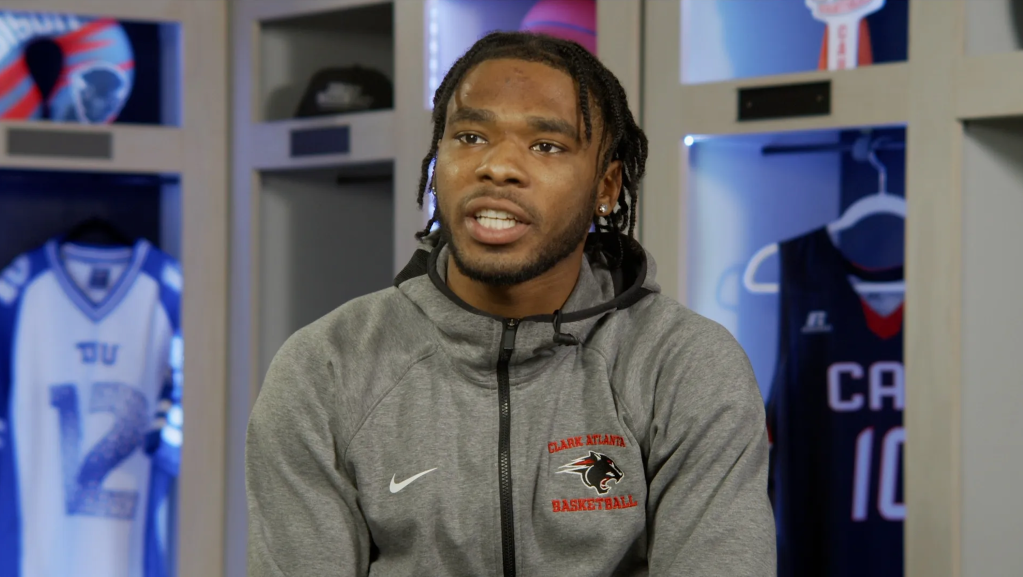ABlack man’s relationship with his barber is nothing to play with—something photographer Brandon Tauszik learned quickly after moving to Oakland from the Florida suburbs in 2011. A far cry from the stale, chain barbershops he was used to, Tauszik, who is white—was blown away by the number of free-standing African-American-owned shops in his new hood. After visiting a few locations in the area, he set out to create Tapered Throne—a collection of GIFs highlighting the Black barbershop experience.
“Haircuts are not commodities for African-Americans. You cannot get one anywhere, from anyone, at any price.”
Shot in black and white over a four-year period, Tauszik captures the atmosphere of these shops through the slight movements of individuals and the subtle, yet significant interactions between barbers and their customers.
“Whether they own the shop or rent a chair, barbers work for themselves, establishing a level of economic security that countless African Americans have been seeking since the end of slavery,” explains Quincy T. Mills, Ph.D, a Professor of Africana Studies at Vassar College who penned the forward for this project. “Haircuts are not commodities for African Americans. You cannot get one anywhere, from anyone, at any price. One’s barber knows how he likes his hair cut, how long to keep the sideburns, how to shape the taper.”
Read our interview with Tauszik and check out the complete series below.
CASSIUS: What inspired Tapered Throne?
Brandon Tauszik: The project was born out of a curiosity to explore the roles that Black barbershops play in my hometown of Oakland, California. I hadn’t seen anything in photography or film that took a thoughtful look at these important spaces. After conducting interviews with a few barbers, they illuminated the differences between cutting straight and curly hair and also the importance of these spaces to the Black community. At that point, I decided to create this GIF-based ethnographic portrait of Oakland’s black barbers.
CASSIUS: How long did it take you to complete the project?
BT: The images and interviews were made at barbershops all over Oakland. I began with a few shops near my home and branched out from there. I began the project in 2011 and slowly worked away on it for four years. This was my first time working with GIFs and the first time that the medium was used in the documentary space, so developing that process took a lot of trial and error.
CASSIUS: What were some of the challenges you faced in creating the project?
BT: I’m not African-American, so I was very aware of the risk of making work that did not accurately represent the subject matter and the subjects themselves. I wanted to find a way to minimize my voice in the work and highlight those of the barbers themselves. Part of what took so long to complete the project was the amount of research I was doing in tandem with shooting. I read academic papers and books on the history of Black barbershops in America, including Cutting Along The Color Line by Quincy T. Mills who ended up writing the introductory essay for Tapered Throne.
CASSIUS: What led you to focus on Black barbershops specifically?
BT: Growing up, barbershops were not an important aspect of my culture. Having straight hair, I was familiar with the necessity of going to get a haircut every couple of months. It didn’t transcend that function though in any way. For African-American men, keeping their hair styled often requires weekly visits to the barbershop. That creates an intimate community inside a given shop that ends up uniting older men with teens, rich with poor, all under this shared identity. This is incredibly important due to the fact that most spaces in our society are dominantly white culturally–the workplace, coffee shops, bars, even media. These shops provide a safe and comfortable environment for Black men to express themselves and discourse on shared human experience.
CASSIUS: What were some of the unique differences you noticed in Black barbershops?
BT: Loitering is accepted and even encouraged In these spaces, in fact it’s part of what makes the ecosystem of a Black barbershop function. Some men are waiting for a cut, while some are there just for the community and passionate conversations. Music, sports, cars, careers, politics. It all blends together. Through it all the barber is there, the conductor of the space, chiming in with his own opinions and casually working through a haircut.

















